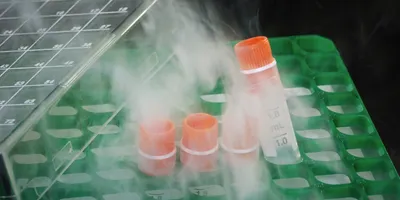With help from newly developed equipment designed and built at Michigan State University, MSU researchers have been able to make first-of-its-kind measurements of several rare nuclei, one of which has been termed a “holy grail” of experimental nuclear physics. The discoveries, made at NSCL and using an isotope purification device, will help to refine theoretical models about how elements are created in the cosmos. Until now, this was beyond the technical reach of nearly all of the world's nuclear science facilities.
"Tin-100, in particular, has been sort of a holy grail of experimental nuclear physics," said NSCL senior physicist Daniel Bazin of one of the isotopes, with 50 protons and 50 neutrons, described in the paper.
Within nuclear science, 50 is considered "magic" because it's one of a handful of numbers associated with extra stability. The other magic numbers are 2, 8, 20, 28, 82 and 126.
It takes a magic number of protons or neutrons to fill the nested energetic shells that form the nucleus like stacking Russian matryoshka dolls.
To understand the concept, consider that each carved doll similarly has a magic number of marbles that precisely and completely fills the hollow interior. And just as a doll full of marbles neatly packed together is probably sturdier than one that's only half or a quarter full, so too is a closed-shell nucleus more stable than its counterparts.
Tin-100 is one of the few “doubly magic” nuclei with magic numbers of both protons and neutrons. Such nuclei are generally far more stable than other particles, especially at the fleeting, shape-shifting edge of nuclear existence. Because of this stability, doubly magic nuclei serve as useful semi-permanent signposts to rare isotope researchers who troll the unexplored terrain of the nuclear landscape seeking to answer basic questions about the structure of nuclear matter and processes that create chemical elements inside stars.
The new experimental device, the radio frequency fragment separator, provides at least a hundredfold boost to NSCL's ability to filter out the few exotic isotopes from the vast sea of other particles produced by its coupled superconducting cyclotrons and downstream magnets. Funding for the equipment was provided by the National Science Foundation.
This newfound filtering ability resulted in the first production and measurement in North America of tin-100, which has been eagerly pursued by experimentalists since at least the mid-1990s. GSI in Germany and GANIL in France are the only other nuclear science facilities in the world to have successfully produced and studied the rare, proton-rich isotope of tin, an element extensively used for thousands of years in everything from ancient spears and knives to cars and modern electronics.
Source: National Superconducting Cyclotron Laboratory, Michigan State University
With help from newly developed equipment designed and built at Michigan State University, MSU researchers have been able to make first-of-its-kind measurements of several rare nuclei, one of which has been termed a “holy grail” of experimental nuclear physics. The discoveries, made at NSCL and using an isotope purification device, will help to refine theoretical models about how elements are created in the cosmos. Until now, this was beyond the technical reach of nearly all of the world's nuclear science facilities.
To continue reading this article, sign up for FREE to

Membership is FREE and provides you with instant access to eNewsletters, digital publications, article archives, and more.











